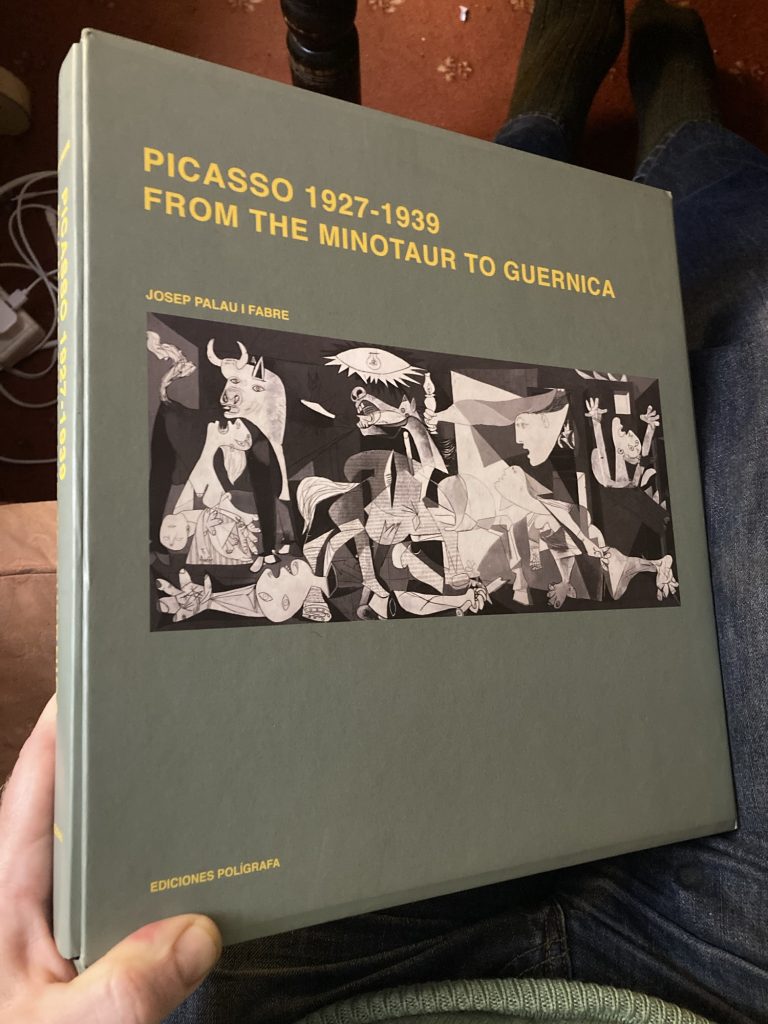

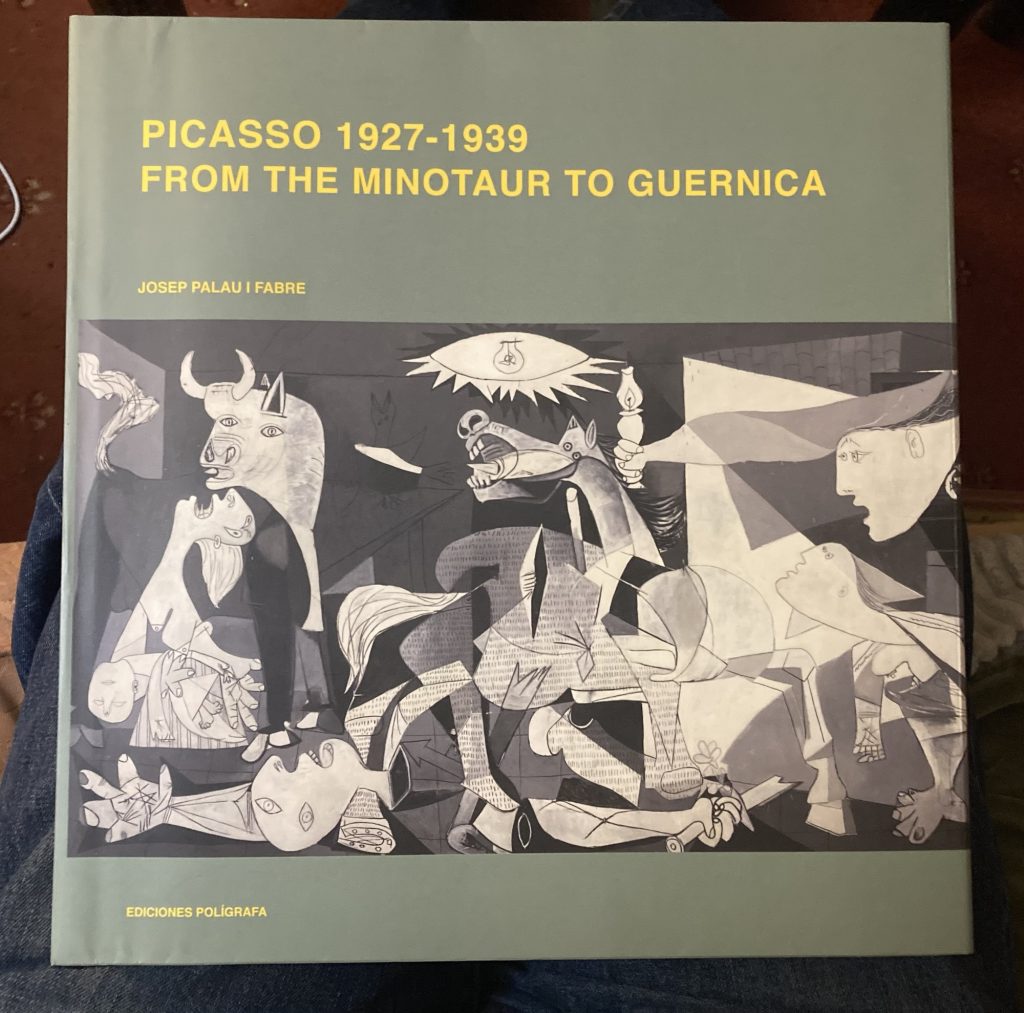

Bought this beauty today. The fourth – and as far as I know? – final JPiF tome on the mighty Picasso. This gets the fuller than full six stars. For being an utterly wonderful treasure trove of mind-blowing creativity.
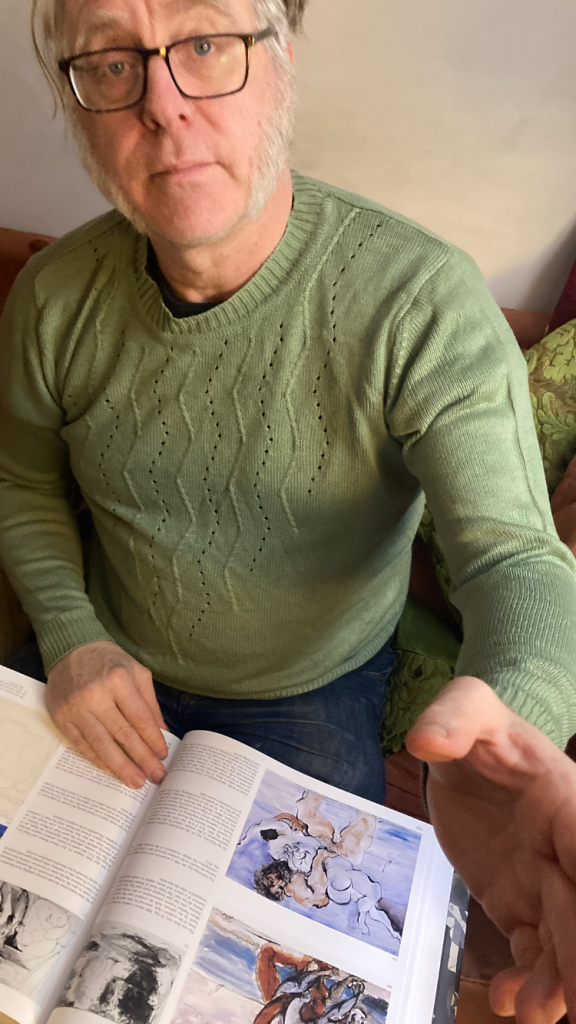
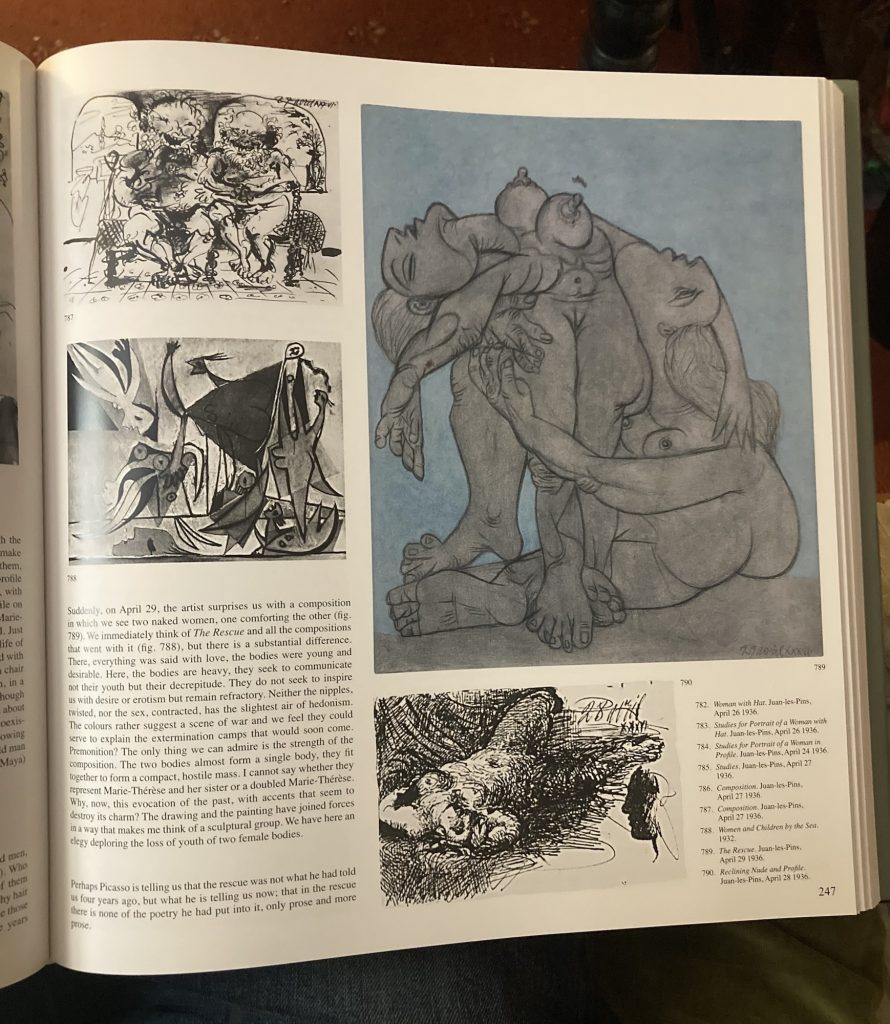
This book highlights for me why having plenty of books on one particular artist – especially when that artist is Picasso – can be very useful. Here, ‘Women & Children By The Sea’, which gets a full colour reproduction in Picasso 1932 (see below), only appears as a small, almost incidental, black and white image.
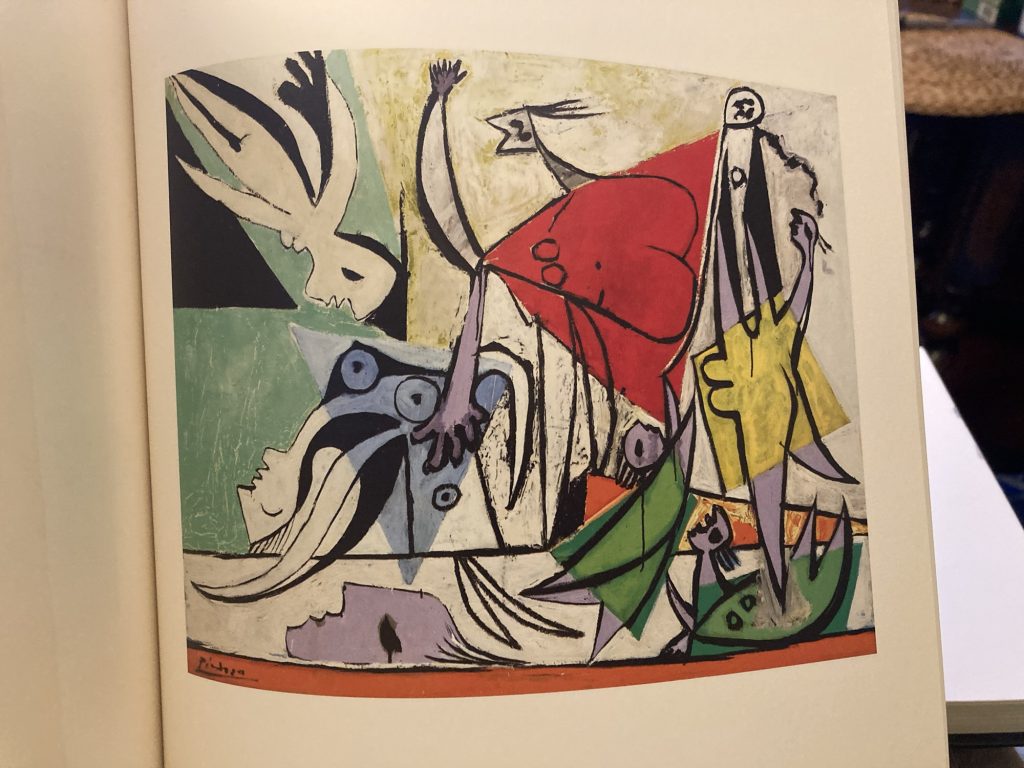
The same goes for ‘The Rescue’, which you see on this other recent post of mine.
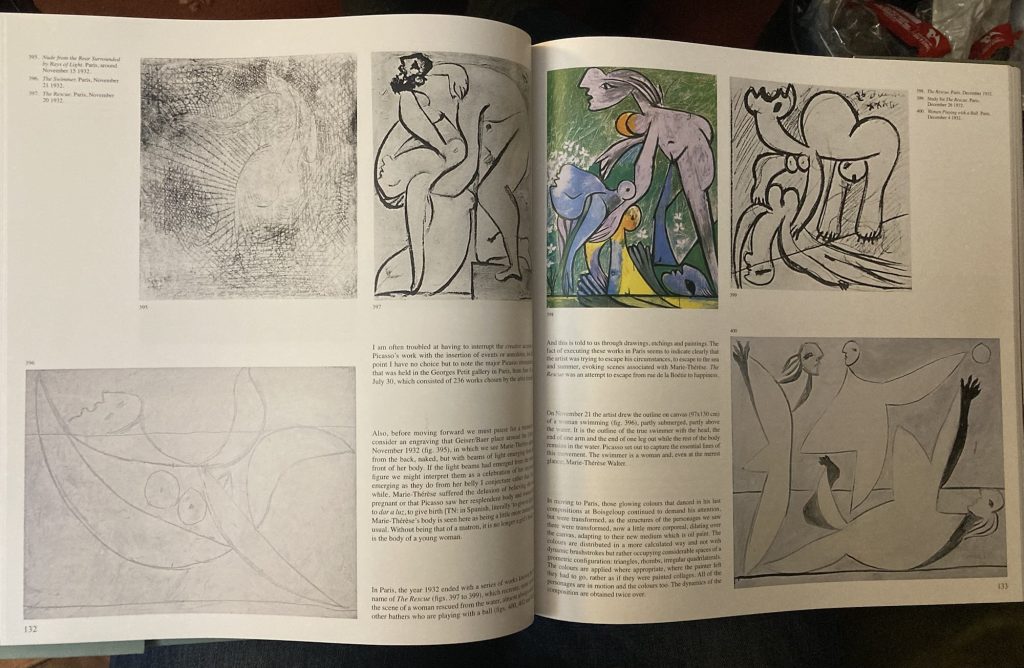
One of the many things I love about Picasso – perhaps the core and most fundamental thing? – is his unbelievably prodigious creativity. I may not – indeed I certainly do not – like all of his art.
What I absolutely adore, however, is the off the charts energy and creativity. He bothers and reworks ideas multiple times, in multiple ways. And he employs multiple styles, even multiple modes: painting, drawing, prints, sculpture, ceramics, collage, to do so.
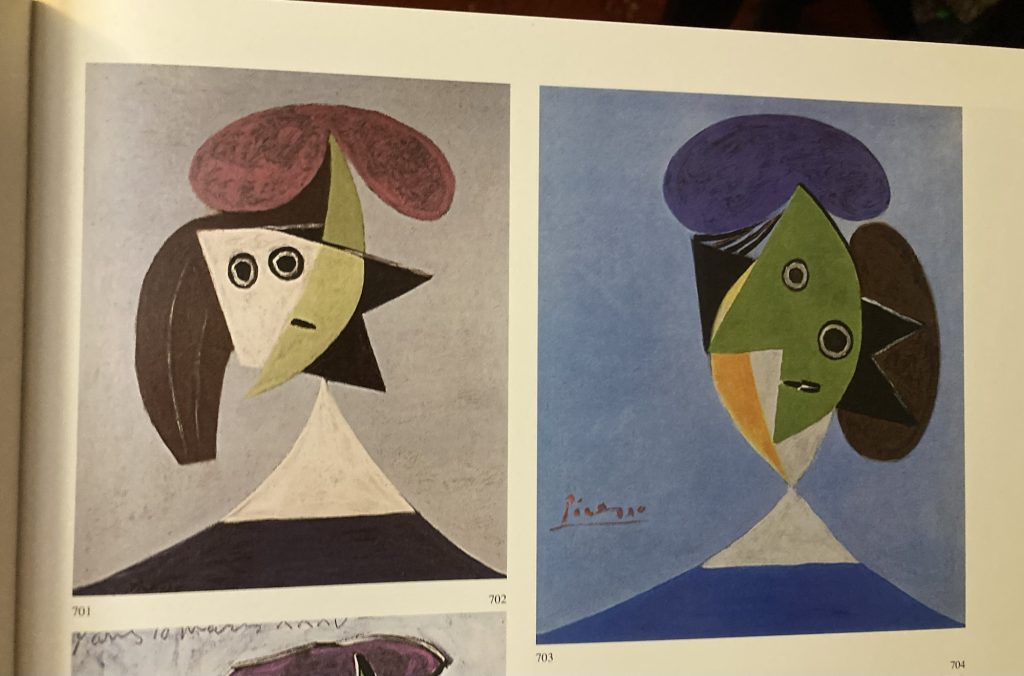
Almost inevitably – and especially so with such huge talent – this seemingly unfiltered scattershot approach yields a great deal of wonderful work.
Indeed, I’d go so far as to say that Picasso is almost singular; unique in his astonishing bravery, to work as freely as he does. I know of no other artist who produces such a variety of art.
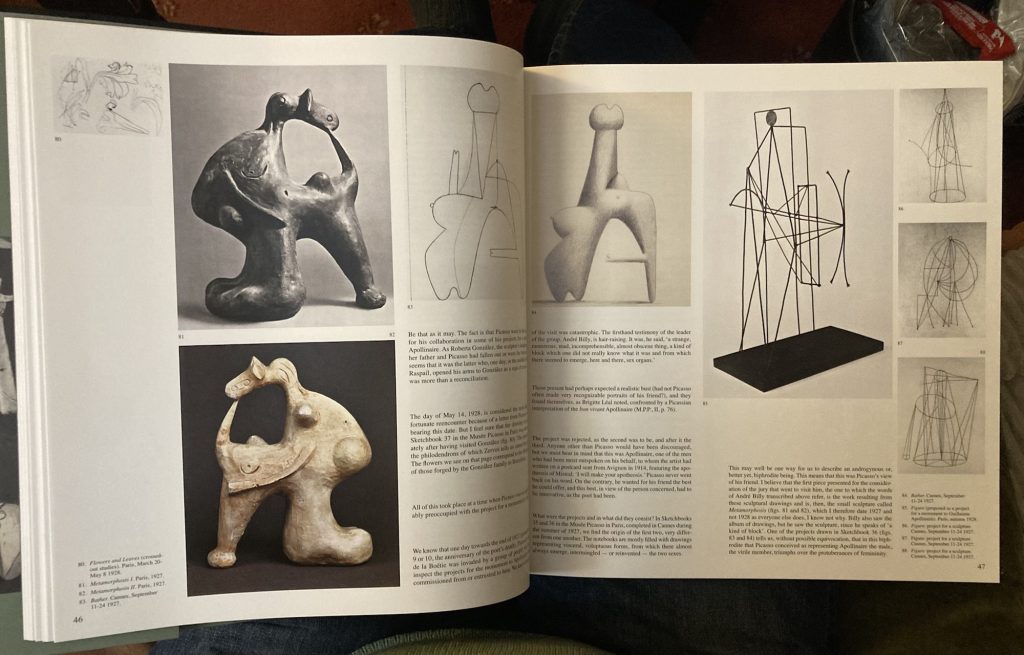
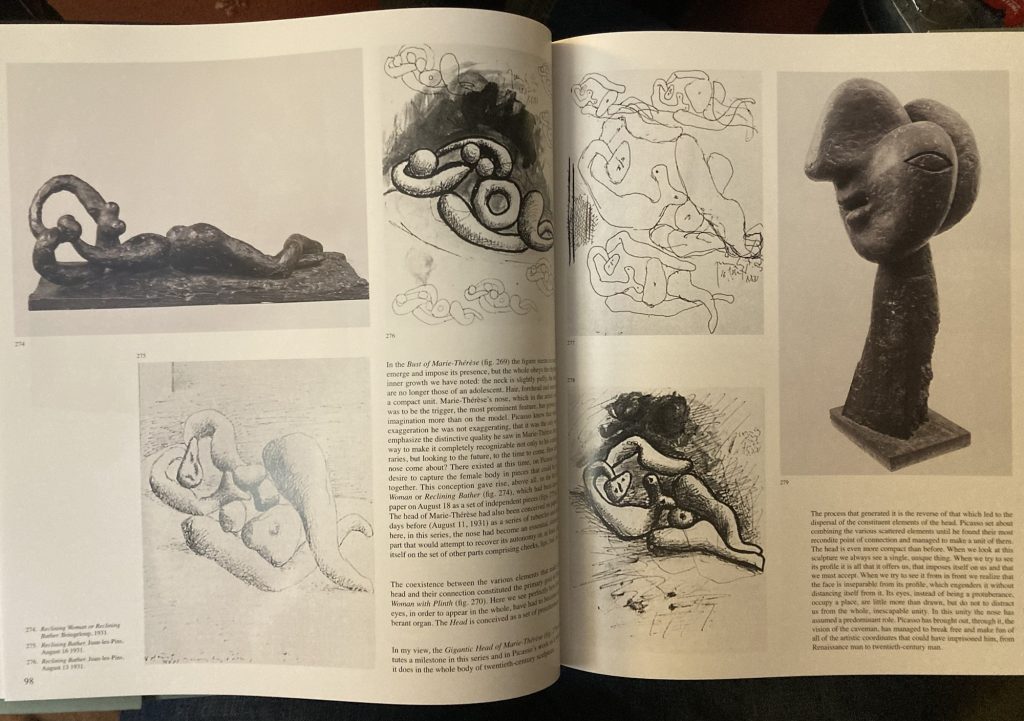
One of the things that had me really bummed out about art and me, was my inability, as I saw it, to reduce my own polyglot interests to a singular marketable style.
Picasso teaches me, gives me permission by example, to be much freer, multifaceted and… here’s a key revelation, to not know. This connects back to that Tove Jansson Moomin cartoon, where he dons a beret and steps off a cliff!
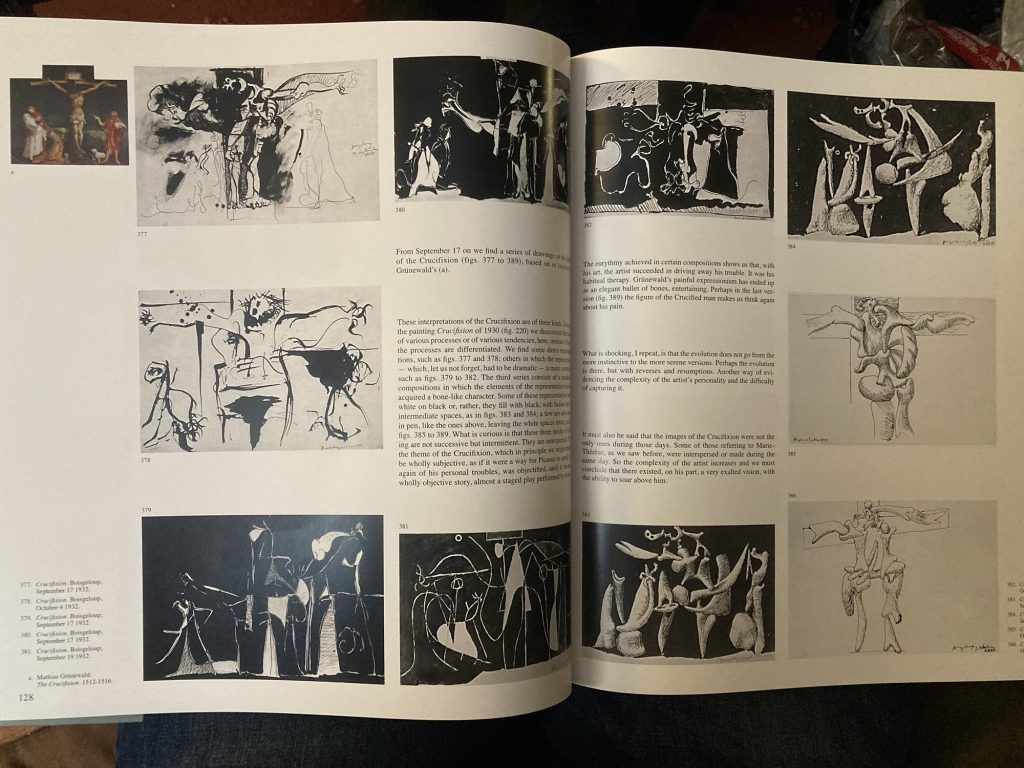

Perhaps I feel vindicated, in that I have never liked, trusted or believed in the smug certainties that so much of the world presents to us. Picasso seems more real and human, because of the universe that’s inside of him, that comes out through his art.
By contrast, most ‘professional’ art limits the maker and their humanity to much narrower margins. Of course the art produced in this more common manner can still be sublime. Indeed, the singular concentration produces a different type of artistic excellence.
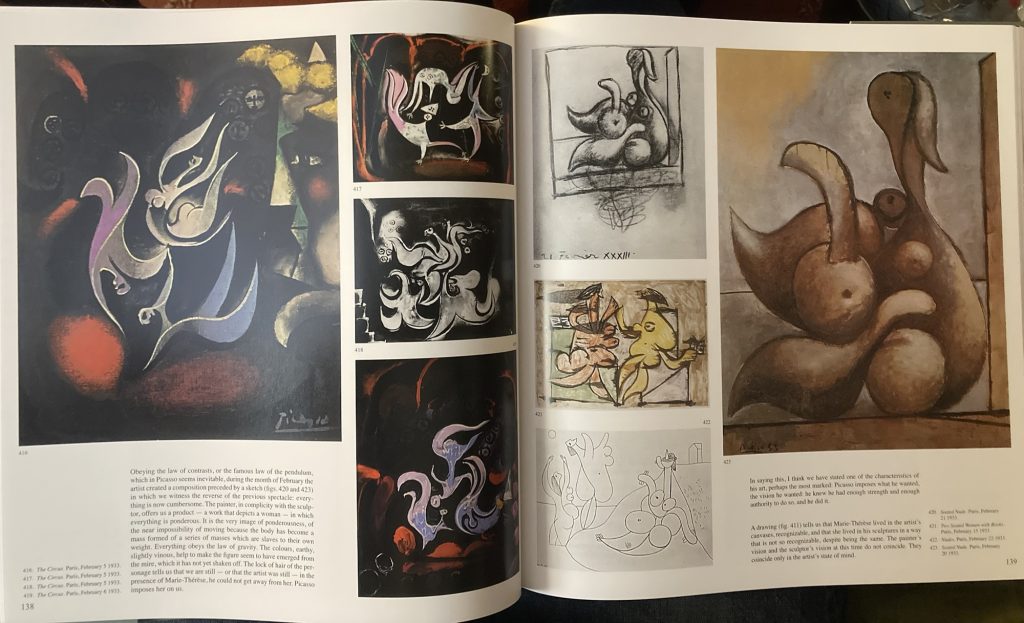
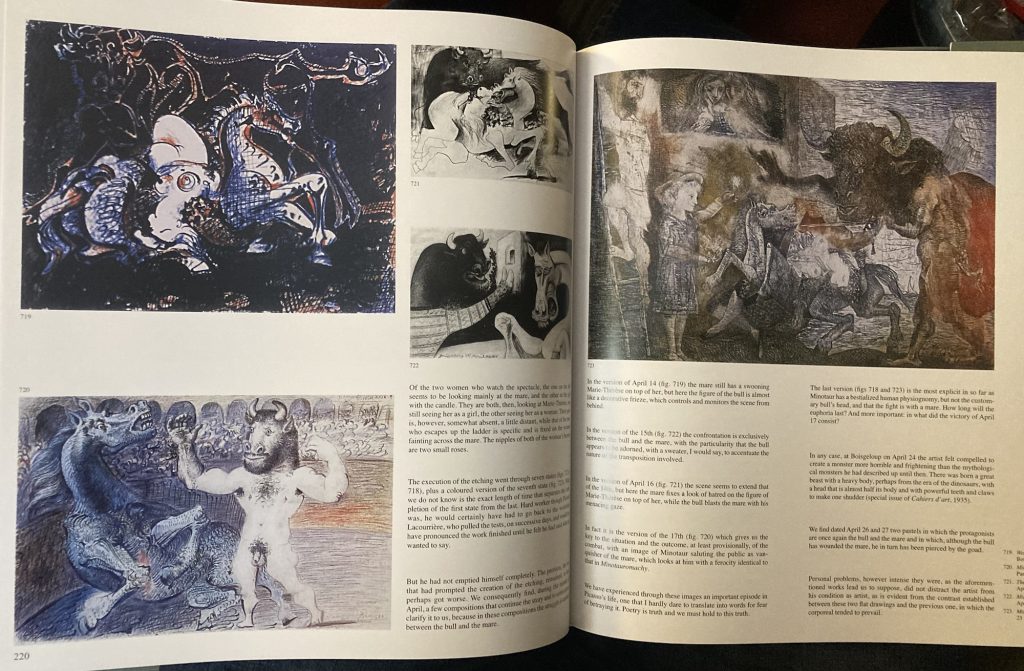
But it remains true, at least for me, that you can’t have the very unusual kind of genius that was or is Picasso, without the freedom and the diversity that mark him out.
*Another example of a piece I love, and recently utilised, this time ‘Woman Sleeping on a Red Cushion’, that appears here in a lesser light than in Picasso 1932.
PS – Picasso was always fairly unabashed about sex. And in this volume the phallic element is possibly more ‘in your face’, literally and metaphorically, than any other. A topic I will be turning to some time fairly soon!
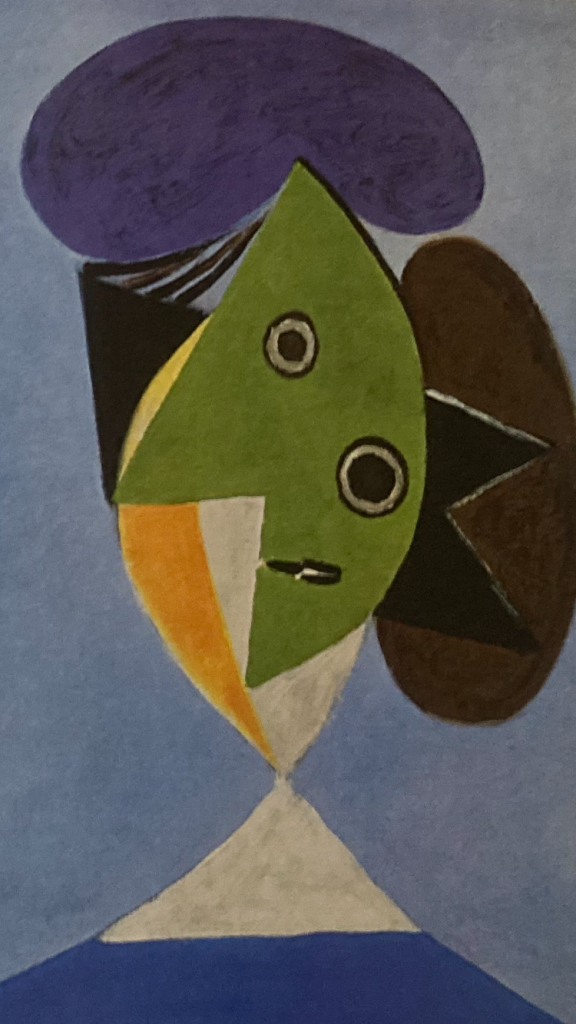
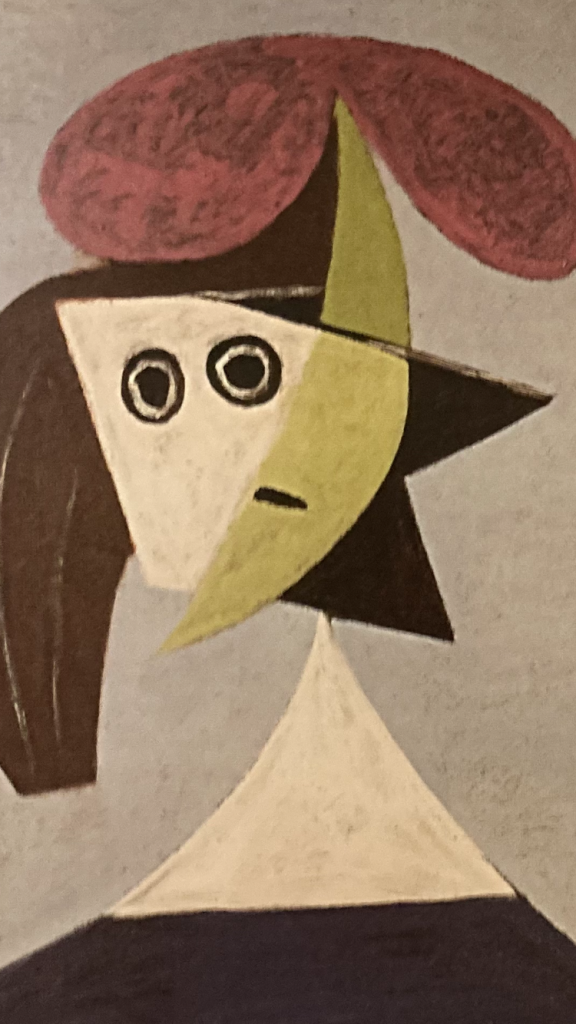
To finish… two heads are better than one, runs a certain saying.
